Rose of Sharon Hibiscus syriacus 'Cicola' (d)
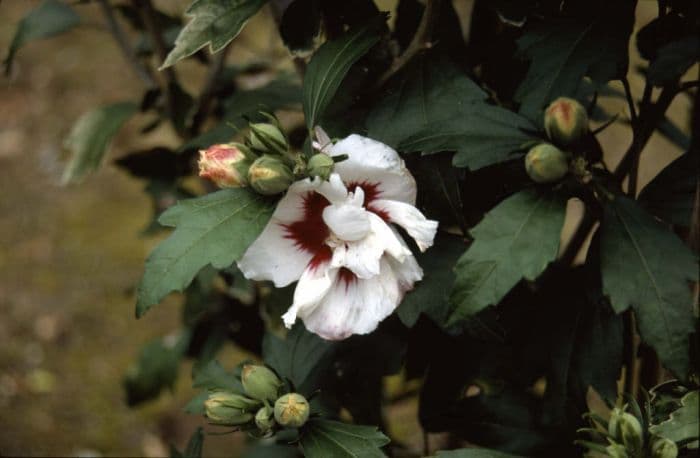
ABOUT
The Hibiscus syriacus 'Cicola', commonly known as the Rose of Sharon, is an ornamental plant that boasts a lush display of flowers and foliage. The blossoms of this variety are notable for their intricate and captivating appearance. Each flower is composed of multiple layers of petals that give them a ruffled texture, which adds to their visual appeal. The petals themselves exhibit a blend of colors, typically featuring shades of pink and white that can create a gradient effect or showcase various tones throughout the bloom. These colors can attract the eye and add a splash of elegance to any garden setting. The Rose of Sharon is recognized for its extended blooming period, during which it produces an abundant number of flowers, providing a continual display of color from mid-summer to early fall. The leaves of the plant are also an attractive feature, with a deep green color and a glossy surface that reflects sunlight, contributing to the plant’s overall vibrancy. The leaves are typically heart-shaped or slightly ovate, with a pointed tip and subtle toothed edges, giving the foliage a pleasing texture. The overall appearance of the Rose of Sharon 'Cicola' is one of lushness and ornamental beauty, making it a popular choice among gardeners who wish to enhance the aesthetic appeal of their landscapes with a flowering shrub that provides both stunning blooms and attractive foliage. Its adaptability to various garden designs and ability to provide visual interest for an extended period make it a valued addition to many gardens.
About this plant
 Names
NamesFamily
Malvaceae
Synonyms
Rose Of Sharon, Syrian Ketmia, Shrub Althea, Rose Mallow
Common names
Hibiscus syriacus 'Cicola'
 Toxicity
ToxicityTo humans
The plant commonly known as Rose of Sharon is not considered toxic to humans. There are no significant symptoms of poisoning associated with ingesting parts of the Rose of Sharon, as it is generally recognized as safe. However, it is always advisable to avoid consuming any plant matter unless it is known to be edible, particularly for individuals with plant sensitivities or allergies.
To pets
Rose of Sharon is considered to have low toxicity to pets. If ingested in large quantities, it may cause mild gastrointestinal upset, including vomiting and diarrhea, primarily due to its unusual nature in their diet rather than its toxicity. The consequences of ingesting parts of the Rose of Sharon by pets are generally not severe, but it is still best to keep an eye on pets and prevent them from consuming garden plants.
 Characteristics
CharacteristicsLife cycle
Perennials
Foliage type
Deciduous
Color of leaves
Green
Flower color
Varies
Height
8-12 feet (2.4-3.7 meters)
Spread
6-10 feet (1.8-3.0 meters)
Plant type
Shrub
Hardiness zones
5-8
Native area
Asia
Benefits
 General Benefits
General Benefits- Attractive Flowers: Produces large, showy blooms which can enhance the visual appeal of a garden.
- Long Blooming Season: Offers a lengthy flowering period from summer to fall, keeping gardens colorful for an extended time.
- Drought Tolerance: Once established, it has good tolerance to drought, reducing the need for frequent watering.
- Cold Hardy: Resistant to cold temperatures, making it suitable for planting in a variety of climates.
- Low Maintenance: Requires minimal care once established, making it ideal for busy gardeners.
- Deciduous Nature: Its leaves turn yellow in the fall before dropping, providing seasonal interest and easier cleanup in the garden.
- Pollinator-Friendly: Attracts butterflies, bees, and other beneficial insects that support biodiversity.
- Versatility: Can be used in landscaping as a hedge, specimen plant, or in mixed borders, offering a range of design uses.
 Medical Properties
Medical PropertiesThis plant is not used for medical purposes.
 Air-purifying Qualities
Air-purifying QualitiesThis plant is not specifically known for air purifying qualities.
 Other Uses
Other Uses- The dried petals of Rose of Sharon can be used to create natural dyes for fabrics, giving them a beautiful, vibrant color.
- In landscape design, Rose of Sharon can be used to form hedges or privacy screens due to its dense and bushy growth habit.
- Rose of Sharon's wood, being quite firm, can be used for making small wooden objects such as handles or intricate carving projects.
- When pruned correctly, Rose of Sharon can serve as a topiary in gardens, providing a decorative and artistic living sculpture.
- The flowers are sometimes used in salads or as garnishes due to their colorful and slightly tangy flavor, though not commonly for culinary purposes.
- Its large and showy blooms make Rose of Sharon a great candidate for a natural plant-based ink or paint, useful in artworks and crafts.
- In apiculture, Rose of Sharon can be planted to attract bees as it serves as a late-summer source of nectar when other plants have stopped blooming.
- Rose of Sharon's seed pods can be dried and used in decorative arrangements or as part of craft projects, adding an element of natural beauty.
- The flowers can also be used to infuse oils, imparting a delicate floral scent for perfumery or natural home fragrance solutions.
- Its flowers and leaves can be incorporated into potpourri mixes to add pleasant scents and a pop of color to a room.
Interesting Facts
 Feng Shui
Feng ShuiThe Rose of Sharon is not used in Feng Shui practice.
 Zodiac Sign Compitability
Zodiac Sign CompitabilityThe Rose of Sharon is not used in astrology practice.
 Plant Symbolism
Plant Symbolism- Delicate Beauty: Hibiscus flowers are widely recognized for their large, colorful blossoms, which symbolize delicate and ephemeral beauty.
- Femininity: The soft and exotic appearance of the Rose of Sharon (common name of Hibiscus syriacus) often represents feminine energy and grace.
- Love: In some cultures, giving someone a hibiscus can mean that the giver is acknowledging the recipient's delicate beauty and can be a symbol of love.
- Invitation: The Rose of Sharon's lavish flower invites pollinators and, symbolically, it can represent an open invitation or hospitality.
- Rebirth: Because the Rose of Sharon blooms new flowers continuously throughout its blooming season, it can symbolize rebirth or a new beginning.
 Water
WaterFor the Rose of Sharon, it's important to establish a consistent watering schedule. They prefer soil that is kept slightly moist, so watering thoroughly once a week is generally sufficient, with additional waterings during times of extreme heat or dry spells. During the growing season, a good rule of thumb is to provide about 1-1.5 gallons of water per week. Adjust the amount to ensure the soil remains moist but not waterlogged, as this plant does not tolerate standing water. In winter, reduce watering to prevent root rot since the plant's water requirements decrease.
 Light
LightThe Rose of Sharon thrives in full sun, which means it needs at least 6 hours of direct sunlight per day to perform well. The ideal spot for this plant would be in an area where it receives unobstructed sunlight for the majority of the day. However, it can also tolerate partial shade, especially in hotter climates, but its flowering might be less abundant in less than full sun.
 Temperature
TemperatureRose of Sharon is hardy and adaptable, growing best in temperatures ranging from 60°F to 90°F. It can survive minimum winter temperatures down to around 0°F but may suffer damage if temperatures drop below this point. It is suitable for growing in USDA Hardiness Zones 5 through 9, where these temperature conditions typically apply.
 Pruning
PruningPruning the Rose of Sharon is necessary to keep it in shape and encourage more prolific blooming. It's best to prune in late winter or early spring before new growth begins. You should prune off any dead or diseased branches, thin out crowded areas, and shape the plant as desired. It's recommended to prune annually since this plant blooms on new wood; pruning stimulates healthier, more vigorous growth and flowering.
 Cleaning
CleaningAs needed
 Soil
SoilThe Rose of Sharon (Hibiscus syriacus 'Cicola') thrives in well-drained, fertile soil with a slightly acidic to neutral pH of 6.0 to 7.5. A good mix would be one-third peat moss, one-third garden soil, and one-third perlite or coarse sand to maintain moisture while providing adequate drainage.
 Repotting
RepottingRose of Sharon should be repotted every 2-3 years to prevent root-bound conditions, ensuring a larger container is selected each time to accommodate growth.
 Humidity & Misting
Humidity & MistingRose of Sharon prefers moderate to high humidity levels but is quite adaptable and can thrive in average household humidity.
 Suitable locations
Suitable locationsIndoor
Ensure bright light, avoid overwatering, prune for shape.
Outdoor
Full sun, protect from strong winds, mulch base, water deeply.
Hardiness zone
5-9 USDA
 Life cycle
Life cycleHibiscus syriacus 'Cicola', commonly known as Rose of Sharon, starts its life cycle from seed, which after germination begins the growth of a seedling under suitable conditions of soil, light, and warmth. The seedling stage progresses into a vegetative phase, where the plant develops roots, stems, and leaves, establishing itself firmly in the environment. As it matures, the Rose of Sharon enters the flowering stage during summer, showcasing its large, showy blooms that are effective in attracting pollinators for sexual reproduction. After pollination, the flowers produce dry fruits that contain seeds, completing the reproductive stage. Seeds are then dispersed by various means, including wind, water, or animals, and those that find a conducive place to grow will initiate a new life cycle. With proper care, such as pruning for shape and health, the Rose of Sharon can live many years, returning to the flowering and seed-producing stages seasonally.
 Propogation
PropogationPropogation time
Spring-Early Summer
Propogation: The Hibiscus syriacus 'Cicola', commonly known as Rose of Sharon, is most commonly propagated through softwood cuttings. This method is typically carried out in late spring or early summer when the plant's new growth is still tender and flexible. To propagate, a gardener would cut a 4 to 6 inch (approximately 10 to 15 centimeters) section of a healthy, non-flowering stem, making sure it has several leaves. The lower leaves are removed, and the cut end is dipped in a rooting hormone to encourage root development. This cutting is then planted in a moist potting mix, with the bottom half of the stem buried in the soil. A plastic bag or a dome is often placed over the cutting to maintain high humidity. Roots usually develop within 4 to 8 weeks, after which the new plant can be gradually acclimatized to outdoor conditions and eventually transplanted into the garden.
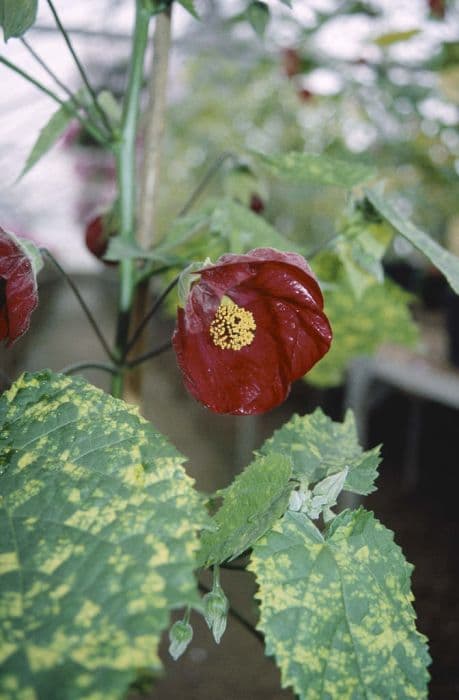
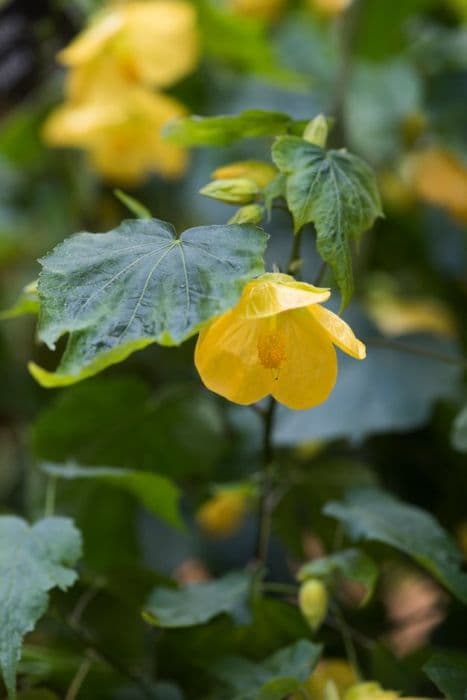
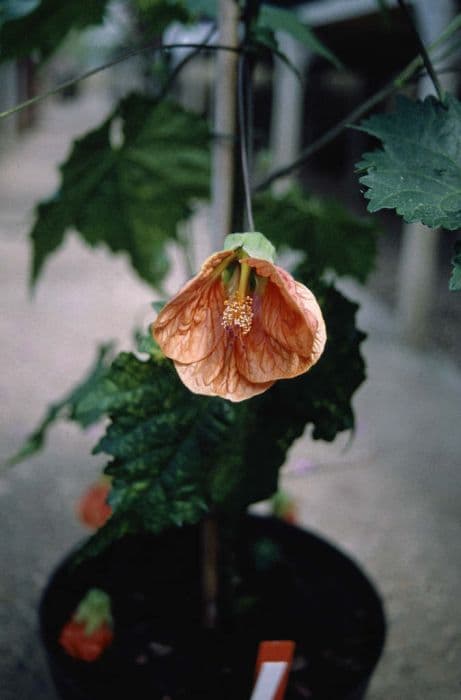
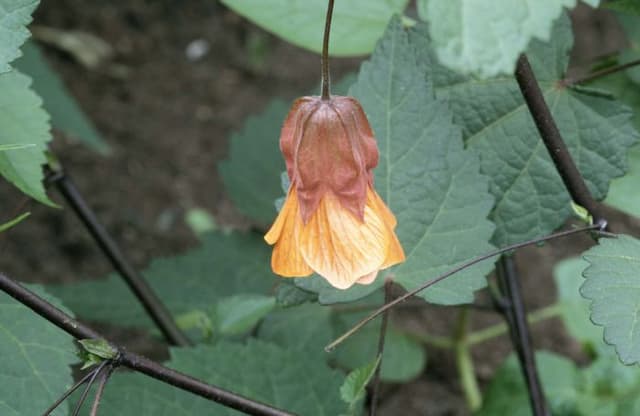

![Abutilon [Yellow Trumpet]](/_next/image?url=https%3A%2F%2Fplants-admin.emdemapps.com%2Fimages%2Fplants%2F%2Fimages%2F604b5caa8b4fb.png&w=640&q=75)


